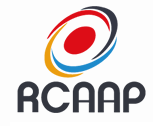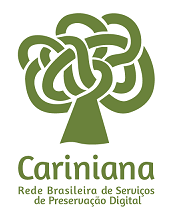Formas de preparo de solo e controle de plantas daninhas nos fatores agronômicos e de produção da mandioca
DOI:
https://doi.org/10.5433/1679-0359.2012v33n6p2241Palavras-chave:
Manihot esculenta, Cobertura vegetal, Plantio direto, Cultivo mínimo.Resumo
O trabalho foi conduzido com o objetivo de avaliar formas de preparo de solo e o controle de plantas daninhas sobre a produção da mandioca. Anteriormente ao plantio do experimento, deixou-se uma área em pousio, com predominância de Brachiaria brizantha, e em outra área, cultivou-se aveia preta em sistema convencional de preparo de solo. Ao final do ciclo da aveia a área foi utilizada para instalação do experimento com a cultura da mandioca (cv IAC15). O delineamento experimental foi o de blocos casualizados com três tratamentos e seis repetições. Os tratamentos testados correspondentes aos tipos de preparo do solo e sistemas de condução da lavoura foram os seguintes: T1- preparo convencional do solo na área em pousio e com controle de plantas daninhas (PC), T2 – Plantio direto sobre a palhada de aveia sem controle das plantas invasoras (PDsc) e T3 – Plantio direto sobre a palhada de aveia com controle das plantas invasoras (PDcc). Para o tratamento correspondente ao preparo convencional (PC) as parcelas experimentais foram preparadas com uma aração e uma gradagem niveladora. O plantio direto foi realizado utilizando plantadora mecanizada. A colheita foi realizada 14 meses após o plantio. Os maiores valores para altura de plantas e massa fresca da parte aérea foram observados nos tratamentos correspondentes ao sistema de plantio direto na palha (PD-sc e PD-cc). O maior número de raízes ha-1 foi obtido no tratamento PD-sc que diferiu somente do PC. Não foram observadas diferenças significativas para a produção de massa fresca de raízes entre os tratamentos testados. Quanto ao teor de amido das raízes o maior valor foi obtido no tratamento PD-cc.
Downloads
Downloads
Publicado
Como Citar
Edição
Seção
Licença
Semina: Ciências Agrárias adota para suas publicações a licença CC-BY-NC, sendo os direitos autorais do autor, em casos de republicação recomendamos aos autores a indicação de primeira publicação nesta revista.
Esta licença permite copiar e redistribuir o material em qualquer meio ou formato, remixar, transformar e desenvolver o material, desde que não seja para fins comerciais. E deve-se atribuir o devido crédito ao criador.
As opiniões emitidas pelos autores dos artigos são de sua exclusiva responsabilidade.
A revista se reserva o direito de efetuar, nos originais, alterações de ordem normativa, ortográfica e gramatical, com vistas a manter o padrão culto da língua e a credibilidade do veículo. Respeitará, no entanto, o estilo de escrever dos autores. Alterações, correções ou sugestões de ordem conceitual serão encaminhadas aos autores, quando necessário.
















